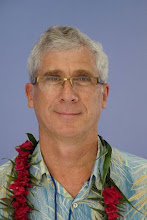A Worldly Christian: The Life and Times of Stephen Neill
By Dyron Daughrity
Cambridge, England The Lutterworth Press
2021 401 pp., paper $38.00
Reviewed by Andrew Dahlburg
Dyron Daughrity’s A Worldly Christian: The Life and Times of Stephen Neill (2021) is the sequel to Daughrity’s earlier volume on Bishop Stephen Neill: From Edinburgh to South India (2008). The new book builds on the previous volume and includes an additional two hundreds pages on Neill’s life and includes many fascinating photographs and quotes from other sources and scholars. No doubt, the book is destined to become the definitive source for Bishop Stephen Neill.
Bishop Stephen Neill was one of the most remarkable missionary figures of the last century. During his lifetime, Neill wrote over seventy books and spoke over 16 different languages. Neill’s books on missiology, church history, New Testament interpretation are still read today and seem relevant. Anglicanism ( 1958), The Interpretation of the New Testament: 1861-1961 (1964) and The History of Christianity in India (1984) are still valued by students of theology and as standards in the field. These are remarkable accomplishments given that Neill is remembered primary as a church historian.
At the same time, this volume also reveals Neill’s complex and many-sided personality. Though incredibly brilliant, Neill was troubled life-long by a series of profound mental health issues including depression, insomnia and thoughts of suicide. Moreover, Neill also is described being a chauvinist, having a colonialist mindset and being difficult to work with. In addition, Daughrity thoroughly documents Neill’s fetish for spanking younger clergy as a form of corrective punishment for sin. It was this behavior that caused Neill to resign his position as the Bishop of Tinnevelly in South India in 1945. However, such behavior continued well into his late seventies and Daughrity provides documented cases when the Bishop resided as a scholar in residence at Wycliffe Hall, a theological college for Anglicans at Oxford. Where these outlandish behaviors the result of a strict Victorian Evangelical upbringing, something psychosexual or a kind of controlled sadism? It’s hard to say and ultimately it’s up to the reader to decide.
Eleanor Jackson edited Neill’s autobiography God’s Apprentice (1991) and remarked that Neill’s autobiography could function as a “therapeutic tool” (pg. 206). I agree with this assessment. I read thorough Stephen Neill: A Worldly Christian several times and kept thinking about the concept of the Jungian shadow and wondered how Neill’s life and career could have been different if he had the benefit of regular counseling, mental health care and medication. Most of these kinds of therapies were still in their infancy back in Neill’s day and even harder to find in places like India, Nairobi or other parts of the world where Neill served. These lessons are certainly be the same today with clergy and missionaries serving world-wide. Mental health challenges affects nearly a three quarters of the general population and clergy are not immune. That Neill was able to write and contribute so much in his lifetime given these limitations says something about the man.
Part of my interest in Bishop Neill is that he is an influential missionary theorist and ecumenical pioneer. Neill served the church in various roles for decades so he speaks as one having a unique insight. I’ll allow Bishop Neill to have the last word:
“Basically the primary quality for a missionary is humility. [The missionary] has got to understand that he comes as a guest to people in an alien culture. He has to submit to their ways of thinking, not necessary accept them, but understand them and understand that for them these ways are valid. And, as the church grows, the missionary more and more has to come to understand himself as the servant of the church. He’s not there to boss. He’s not there to put over Western ways of doing things. He is to be, as St. Paul says, ‘the helper of their joy and not the Lord of their faith’ (2Cor. 1:24) pgs. 329-30.







